Historic Districts In Meridian, Mississippi on:
[Wikipedia]
[Google]
[Amazon]
There are nine
 East End Historic District is roughly bounded by 18th St on the north, 11th Ave on the east, 14th St on the south, and 17th Ave on the west. A semi-triangular shaped section extends from the southern edge roughly occupying the area between 16th and 14th Avenues. The NRHP Meridian, MS Historic Districts
East End Historic District is roughly bounded by 18th St on the north, 11th Ave on the east, 14th St on the south, and 17th Ave on the west. A semi-triangular shaped section extends from the southern edge roughly occupying the area between 16th and 14th Avenues. The NRHP Meridian, MS Historic Districts
/ref> district was added to the 1512 14th Avenue – One-story Queen Anne–style wooden residence.
#
1512 14th Avenue – One-story Queen Anne–style wooden residence.
# 1513 14th Avenue – -story
1513 14th Avenue – -story
 1803 35th Ave – Two-story Queen Anne style wooden residence.
#
1803 35th Ave – Two-story Queen Anne style wooden residence.
# 3504 16th St – One-story Queen Anne style wooden residence.
3504 16th St – One-story Queen Anne style wooden residence.
 Meridian Downtown Historic District runs from the former
Meridian Downtown Historic District runs from the former 

 Grand Opera House (2208 5th St)
#
Grand Opera House (2208 5th St)
# Lamar Hotel (410 21st St)
#
Lamar Hotel (410 21st St)
# Threefoot Building (601 22nd Ave)
Notable contributing properties not previously listed in either of the constituent districts include:
#
Threefoot Building (601 22nd Ave)
Notable contributing properties not previously listed in either of the constituent districts include:
#
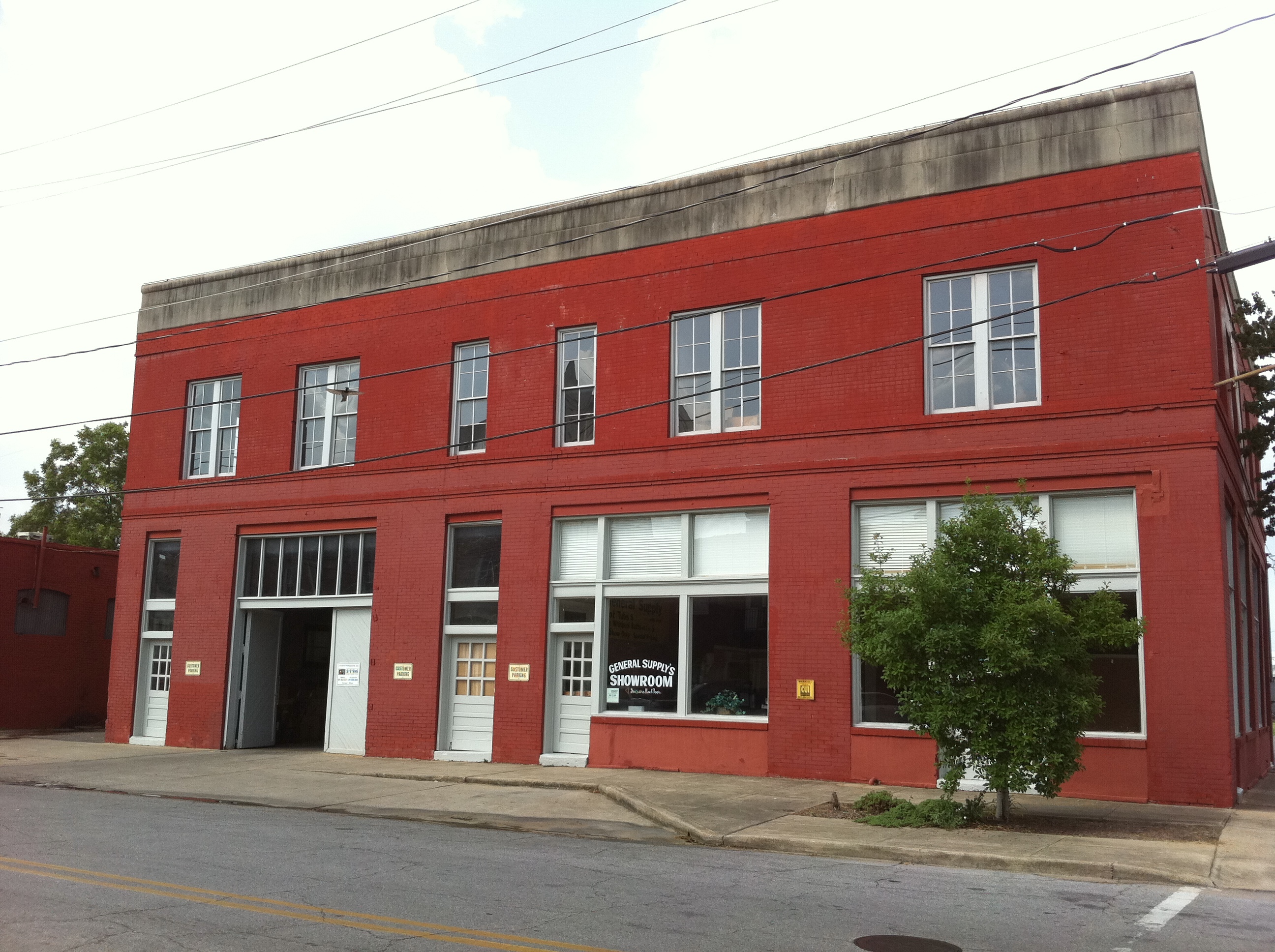 Elmira Hotel (1804 Front St)
#
Elmira Hotel (1804 Front St)
#
 Terminal Hotel (1902 Front St)
#
Terminal Hotel (1902 Front St)
#  Cliff Williams Machine Shop/General Supply Store (208–210 19th Ave)
Cliff Williams Machine Shop/General Supply Store (208–210 19th Ave)
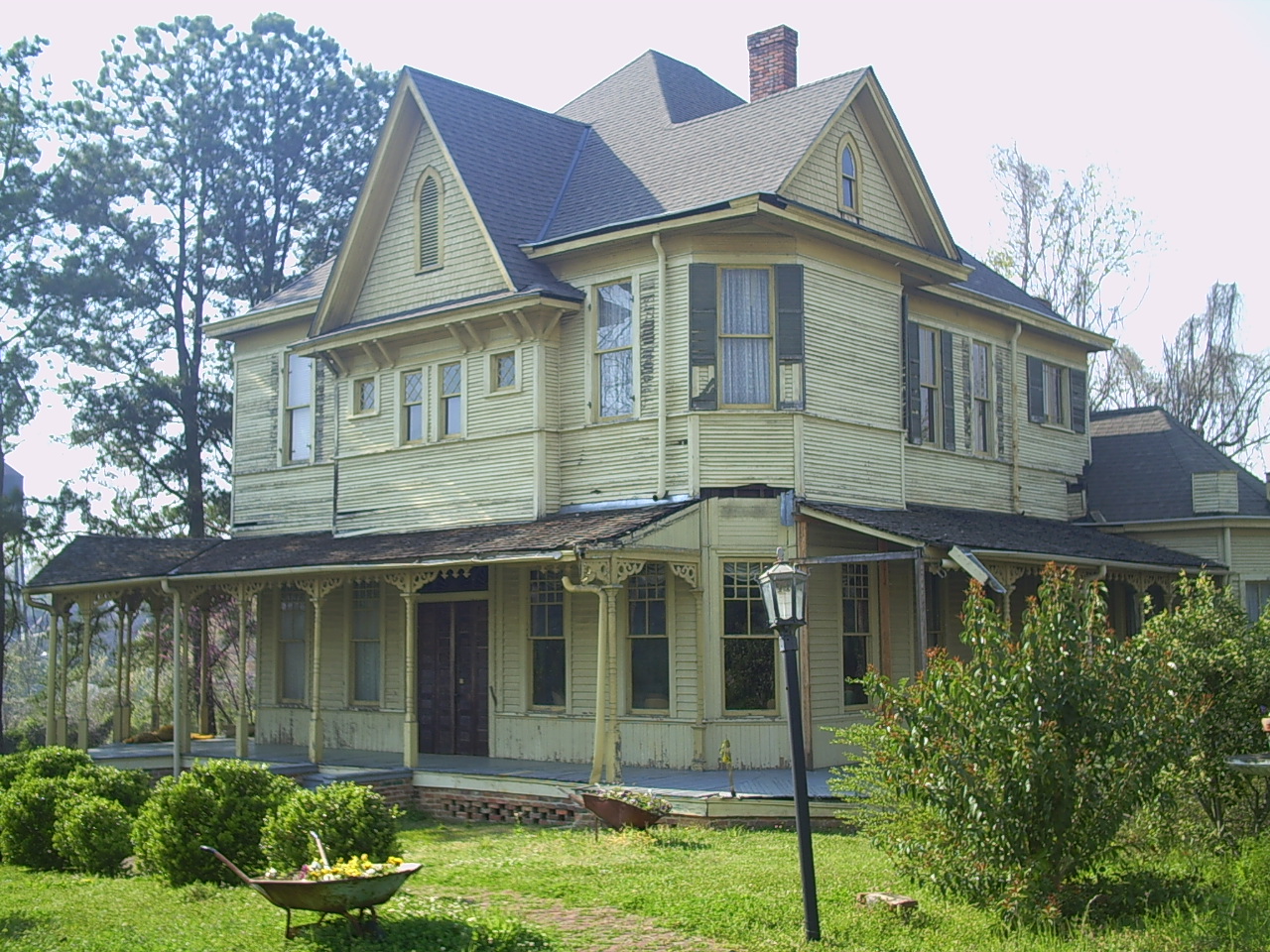 Merrehope Historic District is an irregular shape, roughly bounded by 14th St to the north, 26th Ave to the east, 8th St to the south, and 30th Ave to the west. An additional section extends from the western edge between 8th and 10th streets and terminates at 33rd Ave. The district was listed on the
Merrehope Historic District is an irregular shape, roughly bounded by 14th St to the north, 26th Ave to the east, 8th St to the south, and 30th Ave to the west. An additional section extends from the western edge between 8th and 10th streets and terminates at 33rd Ave. The district was listed on the 
 Merrehope Historical Home (905 31st Ave)
# Carnegie Branch Library (2721 13th St)
Structures still standing that are identified as pivotal to the nature of the district include:
#
Merrehope Historical Home (905 31st Ave)
# Carnegie Branch Library (2721 13th St)
Structures still standing that are identified as pivotal to the nature of the district include:
# 3010 9th St – Two-story
3010 9th St – Two-story  3020 9th St – Two-story Queen Anne–style residence.
#
3020 9th St – Two-story Queen Anne–style residence.
#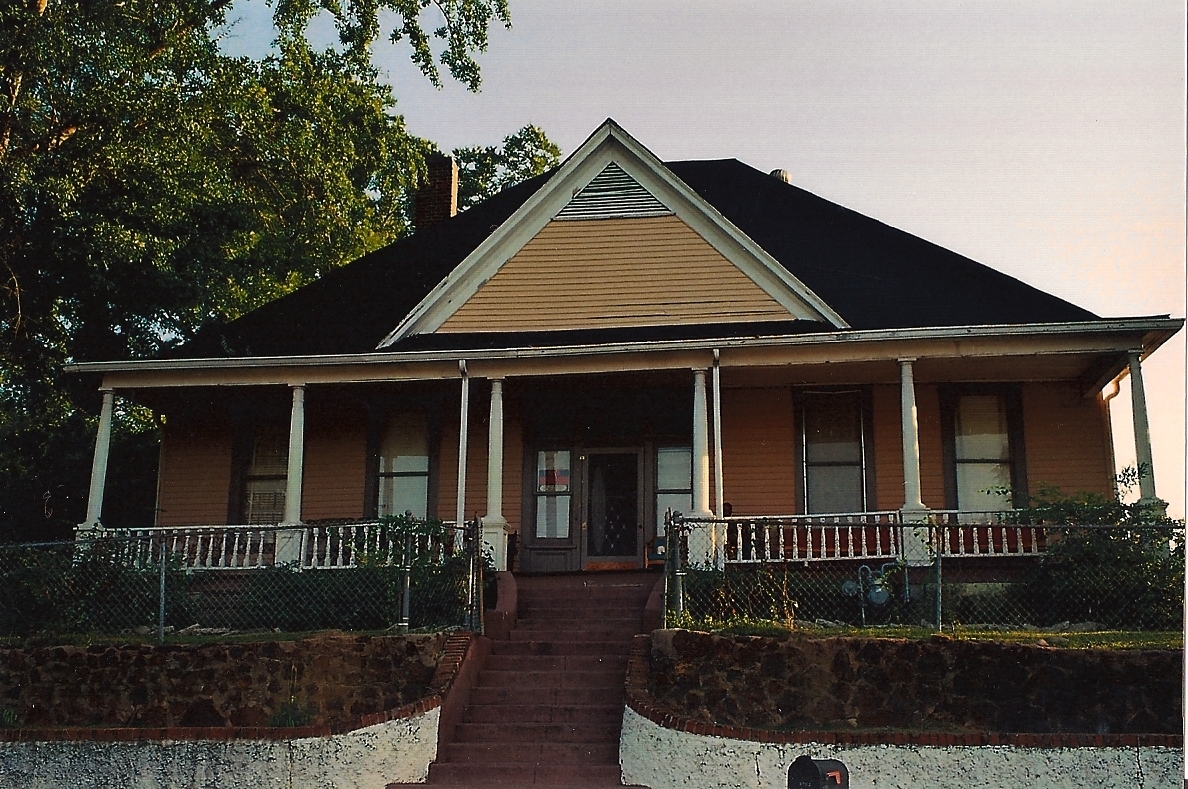 2702 10th St – One-story Queen Anne–style cottage.
#
2702 10th St – One-story Queen Anne–style cottage.
#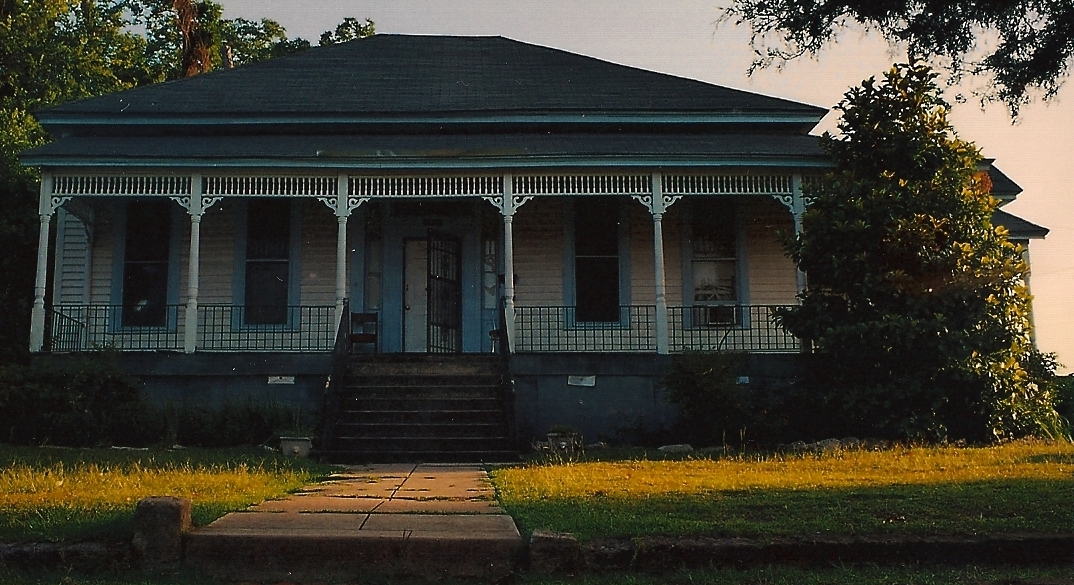 2702 11th St – One-story Queen Anne–style residence.
#
2702 11th St – One-story Queen Anne–style residence.
# 1215 26th Ave – Queen Anne–style cottage built during the 1890s.
#
1215 26th Ave – Queen Anne–style cottage built during the 1890s.
# Meridian School of Music (815 28th Ave) – Two-story Mediterranean-style building built in 1909. The school was the first chartered music school in the state.
#
Meridian School of Music (815 28th Ave) – Two-story Mediterranean-style building built in 1909. The school was the first chartered music school in the state.
# 1121 29th Ave – Two-story Queen Anne–style cottage built during the 1880s.
#
1121 29th Ave – Two-story Queen Anne–style cottage built during the 1880s.
# Frank W. Williams Home (905 31st Ave) – located on the same lot as Merrehope. Built in 1886, the home is an example of
Frank W. Williams Home (905 31st Ave) – located on the same lot as Merrehope. Built in 1886, the home is an example of
 Mid-Town Historic District is roughly bounded by 22nd St on the north, 23rd Ave on the east, 15th St on the south, and 28th Ave on the west. It contains a collection of architectural and historically important 20th Century residences representing the houses of Meridian's wealthy
Mid-Town Historic District is roughly bounded by 22nd St on the north, 23rd Ave on the east, 15th St on the south, and 28th Ave on the west. It contains a collection of architectural and historically important 20th Century residences representing the houses of Meridian's wealthy  1600 24th Ave – -story
1600 24th Ave – -story
 Poplar Springs Road Historic District is roughly bounded by 29th St on the north, 23rd Ave on the east, 22nd St on the south, and 29th Ave on the east. The district, added to the
Poplar Springs Road Historic District is roughly bounded by 29th St on the north, 23rd Ave on the east, 22nd St on the south, and 29th Ave on the east. The district, added to the 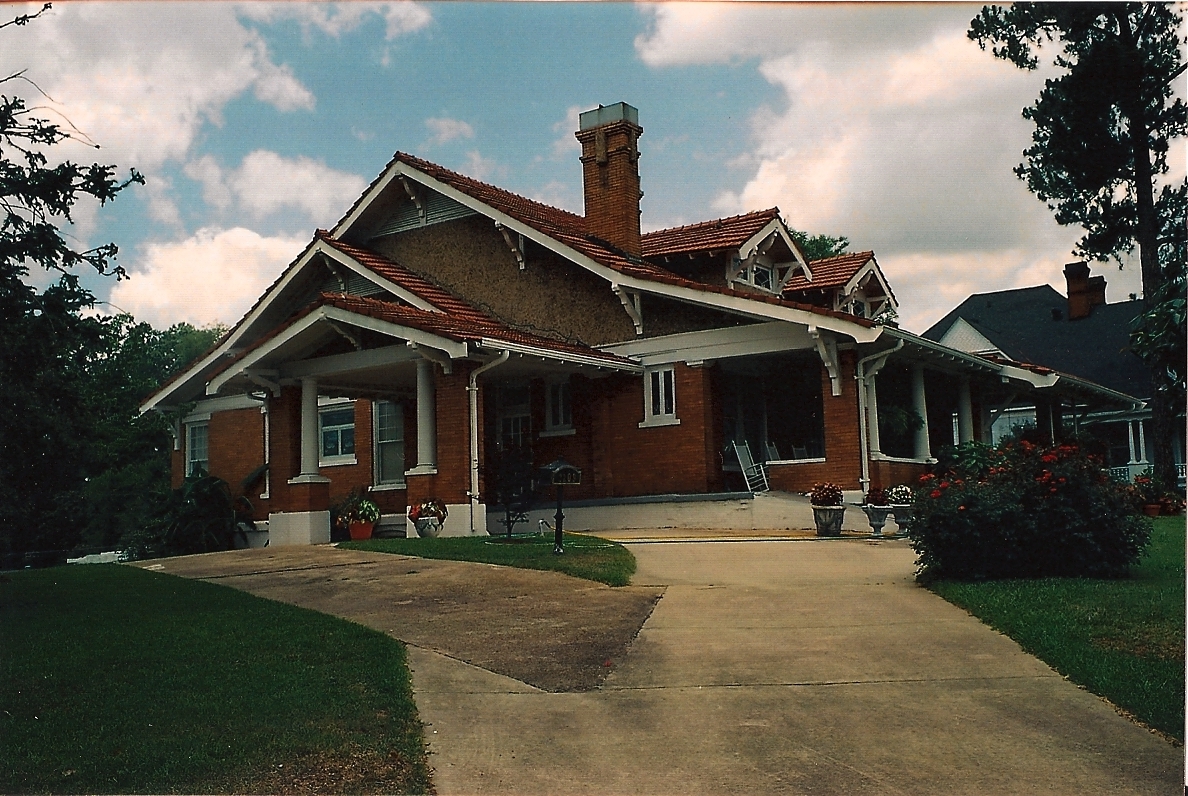 2209 Poplar Springs Rd – One-story
2209 Poplar Springs Rd – One-story  2219 Poplar Springs Rd – -story Queen Anne style cottage.
#
2219 Poplar Springs Rd – -story Queen Anne style cottage.
#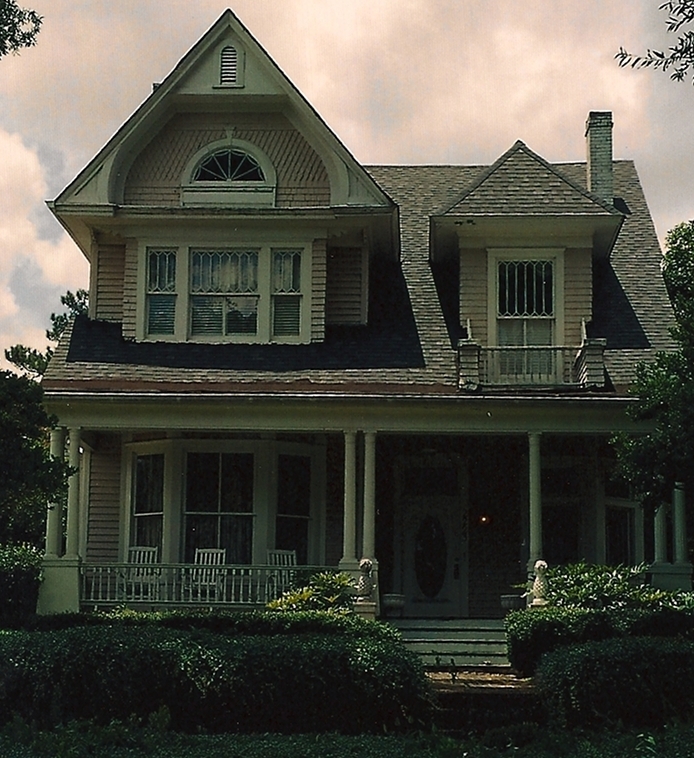 2223 Poplar Springs Rd – -story Queen Anne/
2223 Poplar Springs Rd – -story Queen Anne/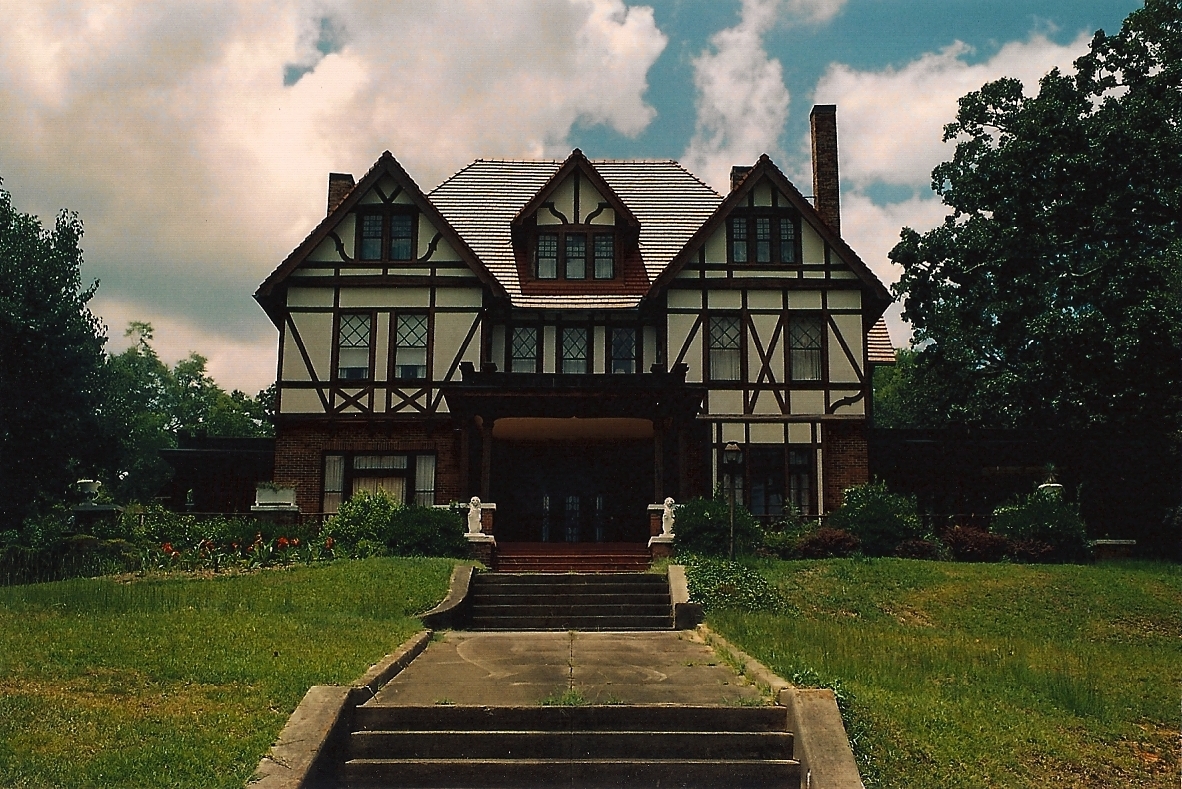 2405 Poplar Springs Rd – -story
2405 Poplar Springs Rd – -story  2407 Poplar Springs Rd – Two-story
2407 Poplar Springs Rd – Two-story  2828 Poplar Springs Rd – Two-story
2828 Poplar Springs Rd – Two-story
 West End Historic District is roughly bounded by 7th St to the north, 28th Ave to the east, 5th St to the south, and Shearer's Branch, a small
West End Historic District is roughly bounded by 7th St to the north, 28th Ave to the east, 5th St to the south, and Shearer's Branch, a small  2907 7th St – Two-story
2907 7th St – Two-story
historic districts
A historic district or heritage district is a section of a city which contains older buildings considered valuable for historical or architectural reasons. In some countries or jurisdictions, historic districts receive legal protection from ce ...
in Meridian, Mississippi
Meridian is the List of municipalities in Mississippi, eighth most populous city in the U.S. state of Mississippi, with a population of 35,052 at the 2020 United States census, 2020 census. It is the county seat of Lauderdale County, Mississippi, ...
. Each of these districts is listed on the National Register of Historic Places
The National Register of Historic Places (NRHP) is the Federal government of the United States, United States federal government's official United States National Register of Historic Places listings, list of sites, buildings, structures, Hist ...
. One district, Meridian Downtown Historic District, is a combination of two older districts, Meridian Urban Center Historic District and Union Station Historic District. Many architectural styles are present in the districts, most from the late 19th century and early 20th century, including Queen Anne, Colonial Revival
The Colonial Revival architectural style seeks to revive elements of American colonial architecture.
The beginnings of the Colonial Revival style are often attributed to the Centennial Exhibition of 1876, which reawakened Americans to the arch ...
, Italianate
The Italianate style was a distinct 19th-century phase in the history of Classical architecture. Like Palladianism and Neoclassicism, the Italianate style combined its inspiration from the models and architectural vocabulary of 16th-century It ...
, Art Deco
Art Deco, short for the French (), is a style of visual arts, architecture, and product design that first Art Deco in Paris, appeared in Paris in the 1910s just before World War I and flourished in the United States and Europe during the 1920 ...
, Late Victorian
Victorian architecture is a series of architectural revival styles in the mid-to-late 19th century. ''Victorian'' refers to the reign of Queen Victoria (1837–1901), called the Victorian era, during which period the styles known as Victorian we ...
, and Bungalow
A bungalow is a small house or cottage that is typically single or one and a half storey, if a smaller upper storey exists it is frequently set in the roof and Roof window, windows that come out from the roof, and may be surrounded by wide ve ...
.
East End Historic District
/ref> district was added to the
National Register of Historic Places
The National Register of Historic Places (NRHP) is the Federal government of the United States, United States federal government's official United States National Register of Historic Places listings, list of sites, buildings, structures, Hist ...
on August 21, 1987. The district's significance lies in its large collection of Queen Anne–style and Colonial Revival
The Colonial Revival architectural style seeks to revive elements of American colonial architecture.
The beginnings of the Colonial Revival style are often attributed to the Centennial Exhibition of 1876, which reawakened Americans to the arch ...
–style cottages built between 1890 and 1910 during Meridian's "Golden Age." Sixty percent of the buildings in the district are from this time period, representing Meridian's rapid eastward growth along the railroad lines after the American Civil War
The American Civil War (April 12, 1861May 26, 1865; also known by Names of the American Civil War, other names) was a civil war in the United States between the Union (American Civil War), Union ("the North") and the Confederate States of A ...
. This growth was made possible by the development of transportation, industrial, and commercial sectors of the city's economy.
Richard McLemore, one of the founders of the city, built his first cabin just outside the district and claimed much of the area in the district to be part of his cotton plantation
Plantations are farms specializing in cash crops, usually mainly planting a single crop, with perhaps ancillary areas for vegetables for eating and so on. Plantations, centered on a plantation house, grow crops including cotton, cannabis, tobacco ...
. In 1839 he established a cemetery (now listed on the National Register of Historic Places as McLemore Cemetery), which is Meridian's earliest remaining historic site. In 1853 Lewis Ragsdale, another one of Meridian's founders, purchased much of McLemore's plantation and subdivided it, giving rise to the many residences in this district. Because of textile and planing businesses located along a streetcar line, 16th Ave became a major north–south route through the city and was the first street in the city to be paved.
Structures identified as pivotal to the nature of the district include:
# 1512 14th Avenue – One-story Queen Anne–style wooden residence.
#
1512 14th Avenue – One-story Queen Anne–style wooden residence.
# 1513 14th Avenue – -story
1513 14th Avenue – -story Gothic Revival
Gothic Revival (also referred to as Victorian Gothic or neo-Gothic) is an Architectural style, architectural movement that after a gradual build-up beginning in the second half of the 17th century became a widespread movement in the first half ...
–style wooden residence.
Highlands Historic District
Highlands Historic District (also called Red Line) is roughly bounded by 19th St on the north, 34th Ave on the east, 9th St on the south, and 36th Ave on the west. The area was originally known as Missouri Ridge because Union soldiers, primarily fromMissouri
Missouri (''see #Etymology and pronunciation, pronunciation'') is a U.S. state, state in the Midwestern United States, Midwestern region of the United States. Ranking List of U.S. states and territories by area, 21st in land area, it border ...
, camped in the area and were engaged in the Battle of Meridian
The Meridian campaign or Meridian expedition took place from February 3 – March 6, 1864, from Vicksburg, Mississippi to Meridian, Mississippi, by the Union Army of the Tennessee, led by Maj. Gen. William Tecumseh Sherman. Sherman captured ...
during the Civil War. The district grew from the introduction of Meridian's light rail
Light rail (or light rail transit, abbreviated to LRT) is a form of passenger urban rail transit that uses rolling stock derived from tram technology National Conference of the Transportation Research Board while also having some features from ...
streetcar
A tram (also known as a streetcar or trolley in Canada and the United States) is an urban rail transit in which vehicles, whether individual railcars or multiple-unit trains, run on tramway tracks on urban public streets; some include s ...
system in 1883. The particular streetcar line servicing the area was known as the "Red Line"; the area shares that name as well. The rail line it began on 8th Street, continued up 34th Avenue, then turned west between 19th and 20th Streets and continued into Highland Park, just outside the western boundary of the district. The streetcar line provided transportation in and to the area that allowed it to develop. The district was added to the National Register of Historic Places
The National Register of Historic Places (NRHP) is the Federal government of the United States, United States federal government's official United States National Register of Historic Places listings, list of sites, buildings, structures, Hist ...
on August 21, 1987.
The district is overwhelmingly residential, with over 90% of its structures being homes; the exceptions are 3 churches, a daycare center and a convenience store. A typical residence in the district is an early 20th-century cottage with an independently roofed porch. Most buildings in the district were built just after the turn of the 20th century, but building dates range from the late 1890s to the early 1930s. Architectural styles of the cottages include Queen Anne, Eastlake, and Colonial Revival
The Colonial Revival architectural style seeks to revive elements of American colonial architecture.
The beginnings of the Colonial Revival style are often attributed to the Centennial Exhibition of 1876, which reawakened Americans to the arch ...
. Some of the buildings' porches were remodelled in the 1920s using American Craftsman architecture
American Craftsman is an American domestic architectural style, inspired by the Arts and Crafts movement, which included interior design, landscape design, applied arts, and decorative arts, beginning in the last years of the 19th century. Its i ...
.
Buildings identified as pivotal to the nature of the district include:
# 1803 35th Ave – Two-story Queen Anne style wooden residence.
#
1803 35th Ave – Two-story Queen Anne style wooden residence.
# 3504 16th St – One-story Queen Anne style wooden residence.
3504 16th St – One-story Queen Anne style wooden residence.
Meridian Downtown Historic District
 Meridian Downtown Historic District runs from the former
Meridian Downtown Historic District runs from the former Gulf, Mobile and Ohio Railroad
The Gulf, Mobile and Ohio was a Class I railroad in the central United States whose primary routes extended from Mobile, Alabama, and New Orleans, Louisiana, to St. Louis, Missouri, St. Louis and Kansas City, Missouri, as well as Chicago, Illin ...
tracks north to 6th St between 18th and 26th Avenues, excluding Ragsdale Survey Block 71 on the northeastern tip of the district. The district was created in 2005 to combine two older districts, Meridian Urban Center Historic District and Union Station Historic District. Meridian's city council
A municipal council is the legislative body of a municipality or local government area. Depending on the location and classification of the municipality it may be known as a city council, town council, town board, community council, borough counc ...
voted to combine these two districts and the nine blocks between them into one large district, which was added to the National Register of Historic Places
The National Register of Historic Places (NRHP) is the Federal government of the United States, United States federal government's official United States National Register of Historic Places listings, list of sites, buildings, structures, Hist ...
on January 16, 2007.
Meridian's downtown was originally divided into a central business district and an industrial zone. The business district made up much of the old Urban Center Historic District, while Union Station Historic District was the industrial zone. The buildings in downtown Meridian represent almost then entire history of the city
Towns and city, cities have a long history, although opinions vary on which Ancient history, ancient settlements are truly cities. Historically, the benefits of dense, permanent settlement were numerous, but required prohibitive amounts of food an ...
, ranging from around 1870 to the mid-1950s. The buildings are associated with periods of economic growth, including Meridian's urban emergence in the 1880s, a transportation boom with the building of Union Station
A union station, union terminal, joint station, or joint-use station is a railway station at which the tracks and facilities are shared by two or more separate railway company, railway companies, allowing passengers to connect conveniently bet ...
in 1906, industrial growth in 1913, struggles during the Great Depression
The Great Depression was a severe global economic downturn from 1929 to 1939. The period was characterized by high rates of unemployment and poverty, drastic reductions in industrial production and international trade, and widespread bank and ...
, and transportation, industrial, and commercial maintenance in the 1940s and 1950s. Architectural styles in the district include Italianate
The Italianate style was a distinct 19th-century phase in the history of Classical architecture. Like Palladianism and Neoclassicism, the Italianate style combined its inspiration from the models and architectural vocabulary of 16th-century It ...
, Spanish Colonial Revival
The Spanish Colonial Revival architecture (), often known simply as Spanish Revival, is a term used to encompass a number of revivalist architectural styles based in both Spanish colonial architecture and Spanish architecture in general. Thes ...
, Romanesque, Art Deco
Art Deco, short for the French (), is a style of visual arts, architecture, and product design that first Art Deco in Paris, appeared in Paris in the 1910s just before World War I and flourished in the United States and Europe during the 1920 ...
, and Commercial minimalist architecture.
The western part of the district, centered on the intersection of 25th Ave and 4th and 5th Streets, has a close connection to the African-American
African Americans, also known as Black Americans and formerly also called Afro-Americans, are an American racial and ethnic group that consists of Americans who have total or partial ancestry from any of the Black racial groups of Africa. ...
community in the city. Important African-American commercial landmarks include the E. F. Young Hotel and the Fielder and Brooks Drug Store, inside which a COFO
The Council of Federated Organizations (COFO) was a coalition of the major Civil Rights Movement organizations operating in Mississippi. COFO was formed in 1961 to coordinate and unite voter registration and other civil rights activities in the st ...
office was located during the American Civil Rights Movement of the 1960s.

Contributing properties
In the law regulating historic districts in the United States, a contributing property or contributing resource is any building, object, or structure which adds to the historical integrity or architectural qualities that make the historic distr ...
to this district which are also listed on the National Register include:
# Union Hotel (2000 Front St)
#
Alex Loeb Building
The Alex Loeb Building is a historic structure in Meridian, Mississippi located at 2115 5th Street. Built in 1926, it was listed on the National Register of Historic Places in 1979. It is also a contributing property to the Meridian Downtown Hist ...
(2115 5th St)
#Soulé Steam Feed Works
Soulé Steam Feed Works is a historic business founded in Meridian, Mississippi in 1892 and incorporated in 1893 by George Soulé. The complex was listed as a contributing property to Union Station Historic District, which was placed on the Nation ...
Machine Shop Annex (1804 4th St)
# Vise Clinic (2120 4th St)
# Ulmer Building (1906 5th St)
# Lauderdale County Courthouse (500 21st Ave)
# Doughboy Monument (Intersection of 23rd Ave and 6th St)
Meridian Urban Center Historic District
The former Meridian Urban Center Historic District encompassed the area between 21st and 25th Aves, stretching from the railroad tracks north to 6th St. In 1872, 25th Avenue was the principal north–south axis in Meridian, and the streets running parallel to the tracks (Front, 4th, and 5th streets) were just beginning to develop around the new railroads. Commercial success built onrailroading
Rail transport (also known as train transport) is a means of transport using wheeled vehicles running in tracks, which usually consist of two parallel steel rails. Rail transport is one of the two primary means of land transport, next to road ...
resulted in a large range of late 19th and early 20th Century architectural styles from Italianate
The Italianate style was a distinct 19th-century phase in the history of Classical architecture. Like Palladianism and Neoclassicism, the Italianate style combined its inspiration from the models and architectural vocabulary of 16th-century It ...
row buildings to an Art Deco
Art Deco, short for the French (), is a style of visual arts, architecture, and product design that first Art Deco in Paris, appeared in Paris in the 1910s just before World War I and flourished in the United States and Europe during the 1920 ...
skyscraper known as the Threefoot Building. The district was originally added to the National Register of Historic Places
The National Register of Historic Places (NRHP) is the Federal government of the United States, United States federal government's official United States National Register of Historic Places listings, list of sites, buildings, structures, Hist ...
on December 18, 1979, and was later combined with Union Station Historic District in 2005 to become Meridian Downtown Historic District.
Notable contributing properties include:
# Hotel Meridian (2119 Front St)
# Weidmann's Restaurant
Weidmann's Restaurant is a historic restaurant in Meridian, Mississippi, United States, established in 1870. It was originally listed as a contributing property to the Meridian Urban Center Historic District, listed on the National Register of Hi ...
(108–210 22nd Ave)
# Masonic Temple Building (2215–2225 4th St)
# Rosenbaum Building (2213–2219 5th St)
# Kress Building (2214 5th St)
# E.F. Young Hotel (500 25th Ave)
Union Station Historic District
The former Union Station Historic District, originally added to the National Register of Historic Places on December 18, 1979, as "Meridian Depot District," occupied the area between 18th and 19th Avenues, stretching from the railroad north to 5th St. Just over a block east of the Meridian Urban Center Historic District, the district covers an area of . In 1885, Meridian was the junction of fiverailroad
Rail transport (also known as train transport) is a means of transport using wheeled vehicles running in railway track, tracks, which usually consist of two parallel steel railway track, rails. Rail transport is one of the two primary means of ...
s, with three others considering coming into the city. From then to 1905, this area was primarily residential, with a small industrial complex developing around the railroads. The construction of Union Station in 1905–1906 led to the development of this area in business and industry. Much of Union Station was demolished in 1966, but a small portion continued to serve as a passenger station.
The name change occurred in 2000, after the demolished section of Union Station was rebuilt in 1996 as the Union Station Multi-Modal Transportation Facility. Another name change occurred in 2005 when the district was combined with Urban Center Historic District to become Meridian Downtown Historic District.
Notable contributing properties include:
# Elmira Hotel (1804 Front St)
#
Elmira Hotel (1804 Front St)
#Union Station
A union station, union terminal, joint station, or joint-use station is a railway station at which the tracks and facilities are shared by two or more separate railway company, railway companies, allowing passengers to connect conveniently bet ...
(1805 Front St)
# Terminal Hotel (1902 Front St)
#
Terminal Hotel (1902 Front St)
# Soulé Steam Feed Works
Soulé Steam Feed Works is a historic business founded in Meridian, Mississippi in 1892 and incorporated in 1893 by George Soulé. The complex was listed as a contributing property to Union Station Historic District, which was placed on the Nation ...
(1806–1808 4th St and 1803–1809 5th St)
# Cliff Williams Machine Shop/General Supply Store (208–210 19th Ave)
Cliff Williams Machine Shop/General Supply Store (208–210 19th Ave)
Merrehope Historic District
National Register of Historic Places
The National Register of Historic Places (NRHP) is the Federal government of the United States, United States federal government's official United States National Register of Historic Places listings, list of sites, buildings, structures, Hist ...
on September 19, 1988. Architecture in the district ranges from the late 1880s to about 1940, representing Meridian's Golden Age and focusing on the African-American community of the time.
The district was originally subdivided around 1853 by city founder John T. Ball, but started developing after the American Civil War
The American Civil War (April 12, 1861May 26, 1865; also known by Names of the American Civil War, other names) was a civil war in the United States between the Union (American Civil War), Union ("the North") and the Confederate States of A ...
. Following the war, Meridian's economy boomed through railroading
Rail transport (also known as train transport) is a means of transport using wheeled vehicles running in tracks, which usually consist of two parallel steel rails. Rail transport is one of the two primary means of land transport, next to road ...
, logging
Logging is the process of cutting, processing, and moving trees to a location for transport. It may include skidder, skidding, on-site processing, and loading of trees or trunk (botany), logs onto logging truck, truckstextile
Textile is an Hyponymy and hypernymy, umbrella term that includes various Fiber, fiber-based materials, including fibers, yarns, Staple (textiles)#Filament fiber, filaments, Thread (yarn), threads, and different types of #Fabric, fabric. ...
enterprises. As Meridian began to grow northward, so did the need for housing. This housing development was made possible by the Meridian streetcar system established in 1883, which had a station adjacent to the Merrehope district on 10th Street and lines running along
8th Street and 29th Avenue. Until a few years before then, most of the city's residents lived downtown close to their workplaces. With the streetcar system up and running, workers could now relocate to the outskirts of the city and commute to work. The 1907 Illustrated Handbook of Meridian, Mississippi describes the relocation as "a wonderful spreading out of hundreds of families who had for years remained in cramped quarters in the congested section of the city."
Much of the district, especially the northern part, was inhabited by middle-class blacks during its peak. In 1908 blacks owned more than fifty businesses in the city, and many were lawyers, doctors, teachers and nurses. Many of these lived in Merrehope District. The district's strong ties to the black community are exemplified in its institutions. A black fire company was located at 9th St and 27th Ave from 1884 to 1903, and two black churches, First Baptist Church and St. Paul United Methodist Church, were built in the district in the late 19th century. The Carnegie library built for African Americans in the city was the only Carnegie library for blacks in the entire country. The Masonic Temple, built in 1903, was owned jointly by three black fraternal lodges and stood as a tribute to the business capacity and enterprise of the black community.
The district is home to five buildings listed on the National Register separately:
#Elson-Dudley House
The Elson-Dudley House is a historic home located at 1101 29th Avenue, Meridian, Mississippi. Built in 1894 by Julius and Dora Neubauer Elson, some of Meridian's earliest settlers, the home is a Victorian Eastlake movement home with Queen Ann ...
(1101 29th Ave)
# Masonic Temple
A Masonic Temple or Masonic Hall is, within Freemasonry, the room or edifice where a Masonic Lodge meets. Masonic Temple may also refer to an abstract spiritual goal and the conceptual ritualistic space of a meeting.
Development and history
I ...
(1220 26th Ave)
# Dial House (1003 30th Ave)
# 3010 9th St – Two-story
3010 9th St – Two-story Mediterranean style
The Mediterranean Sea ( ) is a sea connected to the Atlantic Ocean, surrounded by the Mediterranean basin and almost completely enclosed by land: on the east by the Levant in West Asia, on the north by Anatolia in West Asia and Southern ...
wooden residence with pyramidal roof. The house was built in 1915 by M. R. Grant, who helped establish the Marion Park neighborhood.
# 3020 9th St – Two-story Queen Anne–style residence.
#
3020 9th St – Two-story Queen Anne–style residence.
# 2702 10th St – One-story Queen Anne–style cottage.
#
2702 10th St – One-story Queen Anne–style cottage.
# 2702 11th St – One-story Queen Anne–style residence.
#
2702 11th St – One-story Queen Anne–style residence.
# 1215 26th Ave – Queen Anne–style cottage built during the 1890s.
#
1215 26th Ave – Queen Anne–style cottage built during the 1890s.
# Meridian School of Music (815 28th Ave) – Two-story Mediterranean-style building built in 1909. The school was the first chartered music school in the state.
#
Meridian School of Music (815 28th Ave) – Two-story Mediterranean-style building built in 1909. The school was the first chartered music school in the state.
# 1121 29th Ave – Two-story Queen Anne–style cottage built during the 1880s.
#
1121 29th Ave – Two-story Queen Anne–style cottage built during the 1880s.
#Queen Anne style architecture
The Queen Anne style of British architecture refers to either the English Baroque architecture of the time of Queen Anne (who reigned from 1702 to 1714) or the British Queen Anne Revival form that became popular during the last quarter of th ...
with stained glass, oak paneling, parquet
Parquet (; French for "a small compartment") is a geometric mosaic of wood pieces used for decorative effect in flooring.
Parquet patterns are often entirely geometrical and angular—squares, triangles, lozenges—but may contain curves. T ...
floors, and detailed gingerbread. Many original features and antique furnishings are still in the home. The house was designated a Mississippi Landmark
A Mississippi Landmark is a building officially nominated by the Mississippi Department of Archives and History and approved by each county's chancery clerk. The Mississippi Landmark designation is the highest form of recognition bestowed on prope ...
on June 14, 1995.
Mid-Town Historic District
industrialists
A business magnate, also known as an industrialist or tycoon, is a person who is a powerful entrepreneur and investor who controls, through personal enterprise ownership or a dominant shareholding position, a firm or industry whose goods or ser ...
, professionals, and merchants
A merchant is a person who trades in goods produced by other people, especially one who trades with foreign countries. Merchants have been known for as long as humans have engaged in trade and commerce. Merchants and merchant networks operated i ...
, as well as the working class
The working class is a subset of employees who are compensated with wage or salary-based contracts, whose exact membership varies from definition to definition. Members of the working class rely primarily upon earnings from wage labour. Most c ...
associated with Meridian's Golden Age, when the city was the center of Mississippi's railroad
Rail transport (also known as train transport) is a means of transport using wheeled vehicles running in railway track, tracks, which usually consist of two parallel steel railway track, rails. Rail transport is one of the two primary means of ...
economy. Because of this historic architecture, the district was added to the National Register of Historic Places
The National Register of Historic Places (NRHP) is the Federal government of the United States, United States federal government's official United States National Register of Historic Places listings, list of sites, buildings, structures, Hist ...
on August 21, 1987.
Ninety percent of the buildings in the district were built between 1900 and 1930, most of them in the Bungalow
A bungalow is a small house or cottage that is typically single or one and a half storey, if a smaller upper storey exists it is frequently set in the roof and Roof window, windows that come out from the roof, and may be surrounded by wide ve ...
style. The district has a large percentage of brick structures, built as an alternative to the wooden frame residences made popular by the lumber industry
The wood industry or timber industry (sometimes lumber industry – when referring mainly to sawed boards) is the industry concerned with forestry, logging, timber trade, and the production of primary forest products and wood products (e.g. fu ...
and mills in Meridian. 23rd and 24th Aves were main routes connecting downtown with the northern part of the city through Poplar Springs Drive, making these avenues attractive to builders.
Structures listed as pivotal to the nature of the district include:
# 1600 24th Ave – -story
1600 24th Ave – -story Colonial Revival
The Colonial Revival architectural style seeks to revive elements of American colonial architecture.
The beginnings of the Colonial Revival style are often attributed to the Centennial Exhibition of 1876, which reawakened Americans to the arch ...
residence.
Poplar Springs Road Historic District
National Register of Historic Places
The National Register of Historic Places (NRHP) is the Federal government of the United States, United States federal government's official United States National Register of Historic Places listings, list of sites, buildings, structures, Hist ...
on August 21, 1987, is a collection of residences representing the prosperity of Meridian at the turn of the 20th century and pre- Depression era.
Before Poplar Springs Road (now Poplar Springs Drive) was a street, it was a cattle trail. Around the turn of the 20th century there was a spring
Spring(s) may refer to:
Common uses
* Spring (season), a season of the year
* Spring (device), a mechanical device that stores energy
* Spring (hydrology), a natural source of water
* Spring (mathematics), a geometric surface in the shape of a he ...
north of Meridian, and cattle would travel on the path that is now Poplar Springs Drive to get to the spring. This is the reason that the street doesn't follow the same layout pattern as the rest of the city; the cattle's path gives the street its curvy shape.
In 1905, local lumberman M. R. Grant laid out a plan of irregular side streets and lots along Poplar Springs Road and named it Marion Park, after his daughter. One of the city's first hospitals, Matty Hersee, was located in the park, having been built in 1903. The hospital was moved from the district in 1923, and the original building has since been demolished. Marion Park School was built in 1923 and was later expanded to become the current Meridian High School, the primary school in the Meridian Public School District.
Because of this new residential area, many people started moving north and building the structures that still contribute to the district today. As the area developed, a streetcar brought passengers from downtown Meridian to the Poplar Springs area. The old streetcar stop is marked by a banner. Hundreds of shade trees were planted and still contribute to the streetscape of the district.
Structures listed as pivotal to the nature of the district include:
# 2209 Poplar Springs Rd – One-story
2209 Poplar Springs Rd – One-story Craftsman
Craftsman may refer to:
A profession
*Artisan, a skilled manual worker who makes items that may be functional or strictly decorative
*Master craftsman, an artisan who has achieved such a standard that he may establish his own workshop and take o ...
Bungalow
A bungalow is a small house or cottage that is typically single or one and a half storey, if a smaller upper storey exists it is frequently set in the roof and Roof window, windows that come out from the roof, and may be surrounded by wide ve ...
.
# 2219 Poplar Springs Rd – -story Queen Anne style cottage.
#
2219 Poplar Springs Rd – -story Queen Anne style cottage.
# 2223 Poplar Springs Rd – -story Queen Anne/
2223 Poplar Springs Rd – -story Queen Anne/Colonial Revival
The Colonial Revival architectural style seeks to revive elements of American colonial architecture.
The beginnings of the Colonial Revival style are often attributed to the Centennial Exhibition of 1876, which reawakened Americans to the arch ...
residence.
# 2405 Poplar Springs Rd – -story
2405 Poplar Springs Rd – -story Tudor Revival
Tudor Revival architecture, also known as mock Tudor in the UK, first manifested in domestic architecture in the United Kingdom in the latter half of the 19th century. Based on revival of aspects that were perceived as Tudor architecture, in rea ...
residence.
# 2407 Poplar Springs Rd – Two-story
2407 Poplar Springs Rd – Two-story Mission Revival
The Mission Revival style was part of an architectural movement, beginning in the late 19th century, for the revival and reinterpretation of American colonial styles. Mission Revival drew inspiration from the late 18th and early 19th century ...
–style residence.
# 2828 Poplar Springs Rd – Two-story
2828 Poplar Springs Rd – Two-story Mission Revival
The Mission Revival style was part of an architectural movement, beginning in the late 19th century, for the revival and reinterpretation of American colonial styles. Mission Revival drew inspiration from the late 18th and early 19th century ...
–style residence.
West End Historic District
creek
A creek in North America and elsewhere, such as Australia, is a stream that is usually smaller than a river. In the British Isles it is a small tidal inlet.
Creek may also refer to:
* Creek people, a former name of Muscogee, Native Americans
* C ...
in the city, to the west. The district was added to the National Register of Historic Places
The National Register of Historic Places (NRHP) is the Federal government of the United States, United States federal government's official United States National Register of Historic Places listings, list of sites, buildings, structures, Hist ...
on August 21, 1987. With architecture spanning from 1870 to 1936, the district represents the rise of Meridian from its destruction during the American Civil War
The American Civil War (April 12, 1861May 26, 1865; also known by Names of the American Civil War, other names) was a civil war in the United States between the Union (American Civil War), Union ("the North") and the Confederate States of A ...
to the position of Mississippi's largest city. The steady growth of Meridian's economy during this time made possible the expansion of this district.
The history of the district can be traced from Meridian's earliest days, but its significance lies in its large collection of residences dating from 1890 to 1910. Continuous streetscapes of historic buildings built during this time period can be found throughout the district. A typical residence in the city is a Queen Anne cottage with a steep roof line and a porch that has been remodelled in the Craftsman
Craftsman may refer to:
A profession
*Artisan, a skilled manual worker who makes items that may be functional or strictly decorative
*Master craftsman, an artisan who has achieved such a standard that he may establish his own workshop and take o ...
style. Two of the oldest residences in Meridian are in this district, a Greek Revival
Greek Revival architecture is a architectural style, style that began in the middle of the 18th century but which particularly flourished in the late 18th and early 19th centuries, predominantly in northern Europe, the United States, and Canada, ...
mansion located at 2721 7th St that was built around 1870 and an Italianate
The Italianate style was a distinct 19th-century phase in the history of Classical architecture. Like Palladianism and Neoclassicism, the Italianate style combined its inspiration from the models and architectural vocabulary of 16th-century It ...
building at 2907 7th St built in 1876.
West End developed as lumbermen, industrial laborers, and railroaders moved west as the city grew. Many of these settlers were Irish Catholic
Irish Catholics () are an ethnoreligious group native to Ireland, defined by their adherence to Catholic Christianity and their shared Irish ethnic, linguistic, and cultural heritage.The term distinguishes Catholics of Irish descent, particul ...
s from a small community called Paulding, which was annexed as the city limits expanded. The area was locally called "Irish Alley" and was served by St. Patrick's Roman Catholic Church along with a Catholic convent
A convent is an enclosed community of monks, nuns, friars or religious sisters. Alternatively, ''convent'' means the building used by the community.
The term is particularly used in the Catholic Church, Lutheran churches, and the Anglican ...
that has since been demolished.
Structures still standing that are listed as pivotal to the nature of the district include:
# 2907 7th St – Two-story
2907 7th St – Two-story Italianate
The Italianate style was a distinct 19th-century phase in the history of Classical architecture. Like Palladianism and Neoclassicism, the Italianate style combined its inspiration from the models and architectural vocabulary of 16th-century It ...
building.
See also
* History of Meridian, Mississippi * National Register of Historic Places listings in Lauderdale County, MississippiReferences
{{DEFAULTSORT:Historic Districts In Meridian, Mississippi Meridian, Mississippi Historic districts on the National Register of Historic Places in Mississippi Historic districts in Mississippi Buildings and structures in Meridian, Mississippi Mississippi Landmarks National Register of Historic Places in Lauderdale County, Mississippi Tourist attractions in Meridian, Mississippi